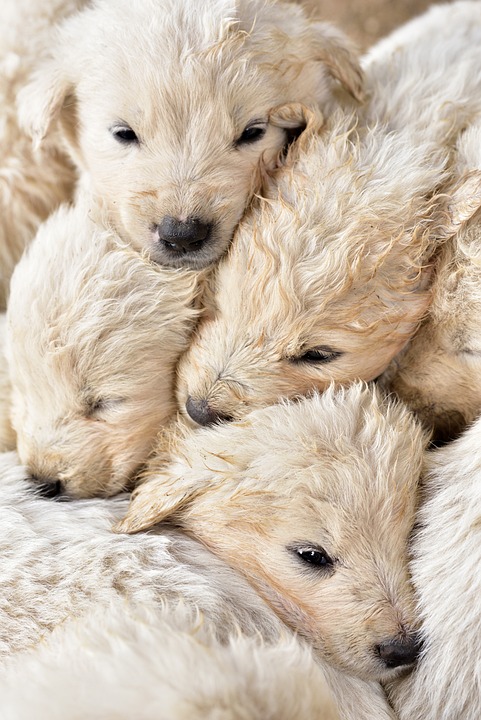From Domestication to Friendship: How Human-Dog Interaction Has Changed Over Time

Image source: Unsplash
Introduction
Dogs have been our companions for thousands of years, but their role in our lives has significantly changed over time. From being wild animals to becoming loyal friends, dogs have embarked on an incredible journey alongside humans. This article explores the evolution of human-dog interaction, from the initial domestication to the deep bond of friendship that exists today.
The Domestication of Dogs

Image source: Pixabay
The domestication of dogs is believed to have occurred between 20,000 and 40,000 years ago. Wolves, the ancestors of dogs, started living near human settlements, scavenging on leftover food and forming a mutually beneficial relationship. This interaction gradually led to the domestication process as humans began to rely on dogs for various tasks.
Initially, dogs were primarily used for hunting and guarding purposes. They assisted humans in tracking game, providing protection, and offering a keen sense of hearing and smell. This collaboration proved to be advantageous for both species as humans had reliable companions, and dogs were ensured a steady supply of food.
Working Dogs

Image source: Unsplash
As civilizations evolved, so did the roles of dogs. Different breeds were selectively bred for specific tasks, resulting in the emergence of working dogs. From herding livestock to pulling sleds, dogs played an integral part in various labor-intensive activities. They were essential in agriculture, transportation, and even in early forms of law enforcement.
Working dogs demonstrated their incredible intelligence, loyalty, and adaptability, making them indispensable to many industries. Breeds like the Border Collie, German Shepherd, and Siberian Husky are prime examples of dogs that excelled in their roles as working companions.
Companionship and Emotional Bond

Image source: Pexels
As time passed, humans developed a deeper emotional connection with dogs. They started viewing them as more than just working animals. Dogs became trusted companions, offering solace, and becoming an integral part of families. Their loyalty and unconditional love made them a source of comfort and emotional support.
With the shift from agriculture-based societies to urbanization, the role of dogs also transformed. The need for working dogs decreased while the desire for companionship increased. Dogs began to share living spaces with their human families, serving as loving companions rather than mere workers.
Dogs in Modern Society

Image source: Pixabay
Today, dogs have solidified their place as beloved family members in modern society. They are no longer seen as purely functional, but rather as integral parts of our lives. Dogs accompany us on leisurely walks, participate in social activities, and provide emotional support in various settings.
The concept of dog ownership has evolved into a focus on responsible pet guardianship. Pet parents are more aware of the needs of their dogs, providing them with proper nutrition, medical care, mental stimulation, and affection. The bond between humans and dogs has reached new heights, and countless studies have shown the positive impact dogs have on our well-being.
FAQs
Q: How did wolves become domesticated dogs?
Throughout history, wolves that lingered near human settlements would scavenge on the discarded food. These wolves were less fearful of humans and gradually began to form relationships. Over generations, wolves that exhibited more favorable traits such as non-aggression and sociability were selected for breeding, leading to the domestication of dogs.
Q: What were the first roles of dogs in human societies?
Initially, dogs were primarily used for hunting purposes. They accompanied early humans on hunts, assisting in tracking and capturing game. Additionally, dogs played a crucial role in guarding settlements, warning humans of potential threats from predators or rival groups.
Q: How have dogs become companions in modern society?
With urbanization and the decrease in the need for working dogs, the focus shifted towards companionship. Humans began to value the emotional connection and the sense of comfort that dogs provided. Dogs are now regarded as beloved family members and play a crucial role in providing companionship, emotional support, and unconditional love.
Q: How can dogs positively impact human well-being?
Studies have shown that spending time with dogs can lower stress levels, reduce anxiety, and improve overall mood. Dogs have also been used in therapy settings to assist individuals with disabilities or mental health issues. Additionally, the responsibility of caring for a dog encourages physical activity, offers a sense of purpose and routine, and reduces feelings of loneliness.
Conclusion
From their initial domestication to their current role as trusted companions, dogs have undergone a remarkable transformation in their relationship with humans. The bond between dogs and humans has evolved from one of necessity for survival to one of friendship and emotional connection.
Whether it be through working alongside humans or offering unwavering companionship, dogs have proven time and again why they are often referred to as “man’s best friend.” As our understanding of their needs and emotions continues to grow, so too does our appreciation for the profound impact they have on our lives.

